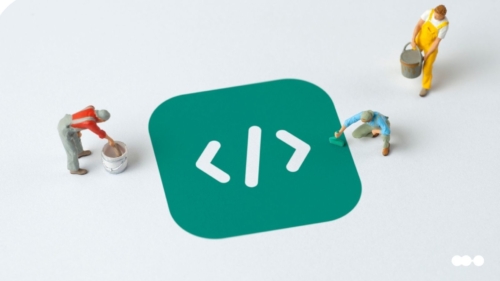ARTICLE SUMMARY
Recruiting automation uses software to eliminate repetitive tasks and give teams more one-on-one time with candidates.

What is recruiting automation?
Recruiting automation refers to the use of software to complete repetitive tasks and activities that support the talent acquisition or recruitment processes. By automating a portion of the task load, recruiters have more time to search for — and build relationships with — qualified candidates.
Automation also helps TA and HR teams unify workflows across departments, improve collaboration, and seamlessly transition candidates to new hire status and onboarding workflows.
| For over half of jobs in the U.S., automation can save workers 12 hours per week |
Why is recruiting automation important?
How you recruit determines if you recruit. Competition for talent remains fierce, and recruitment automation can help teams overcome three primary challenges:
- Finding qualified candidates. Recruiters need to amplify their recruiting signal and expand their talent pool in order to reach the most qualified candidates.
- Managing a high volume of applicants. The volume of applications means it takes more time to sort and pre-qualify applicants, reducing bandwidth for facetime and relationship-building.
- Improving a fragmented application process. The quality of the application process may influence a candidate’s decision to accept an offer and impact your employer brand.
The point of recruiting automation is to give talent acquisition and recruiting teams as much time as possible with prospective candidates. This helps reduce time-to-hire and avoid mistakes in the hiring process.
Even though recruitment is a time-sensitive process and time-to-hire is a primary measure of success, a bad hire can be expensive for a company. With the estimated cost to replace an employee at 30% of the position salary, recruiters need to spend as much time with candidates as possible before making a hiring decision.
How does recruitment process automation work?
The recruiting process is made up of different workflows and tasks. Some of these require face-to-face interaction with candidates and complex decision making skills. Others are simple, repetitive, and don’t require human input. Recruiting automation uses software to complete these types of tasks so that team members can save time and redirect it towards more important activities.
Examples of recruiting tasks that can be automated
| Automation Type | Examples |
|---|---|
| Applications | Capturing applications, consolidating applications into a single source, routing applications to the appropriate reviewer, sending notifications when an application is received. |
| Communication | Email confirmations, notifications of status change, notifications when an item requires attention, approaching deadlines, or requests for additional information. |
| Scheduling | Creating calendar events, sending meeting or interview invitations, sending reminders prior to interviews, and follow up emails after an interview concludes. |
| Job postings | Receiving hiring requests, initiating job approval workflows, posting jobs across multiple channels. |
| Documents and data | Generating offer letters and other documents, capturing signatures, notifying reviewers when data is received or updated, data transfer. |
7 benefits of automating recruitment
- Faster time-to-hire. Automation reduces the amount of repetitive and support work that TA teams and recruiters have to perform, so they have more time for reviewing applications, conducting interviews, and completing the hiring process.
- More face time with candidates. Hiring the wrong candidate can be expensive. Automation makes it possible for TA specialists and recruiters to spend more time getting to know candidates during the application process so they can be sure they are hiring the right people for the job.
- Better candidate experiences. Recruiting automation helps teams deliver candidate experiences that are defined by consistency, structure, and responsiveness. This helps shape candidates’ impression of your company to build a stronger employer brand.
- Seamless transition to onboarding. Automation unifies the recruiting and onboarding processes to avoid problems with handoffs. New hire and onboarding activities use the same data, menus, and interface for a smooth transition when a candidate is hired.
- Scalability. Hiring trends ebb and flow, and recruiting automation can make it easier for teams to scale their recruiting efforts with existing resources.
- Easier cross-team collaboration. Automation software consolidates data and organizes communication to make it easy for users in any department to add information, check or change statuses, and complete approvals.
- More visibility. Automation software gives anyone with permission the ability to view recruiting activity as a whole, as well as individual statuses. Reports and dashboards help teams deliver HR insights that drive business strategy, while Kanban and calendar views help teams stay on schedule and prevent bottlenecks.
Recruiting automation software
If the task or workflow is recurring, repetitive, or predictable, it should be considered a candidate for automation. Teams that are looking to automate their HR workflows have several software options, but one important point to consider is a tool’s flexibility and its capacity to scale.
It may make more sense to choose a recruitment automation option that can integrate with other HR workflows such as onboarding and request management. This helps centralized data, enhances collaboration across departments, and provides a consistent, high-quality user experience.
Look for automation software that includes a simple drag-and-drop interface that allows users to easily organize and activate automations. Expand your automation possibilities even further with software that integrates with a wide range of apps, tools, and platforms.
You may find other features helpful if your team plans to unify recruiting with other HR workflows. For example:

Focus on talent, not tasks
Successful recruitment depends on speed and accuracy. Recruitment automation can help your team achieve both goals. By automating repetitive tasks and non-critical workflows, teams can increase the pace and volume of recruiting efforts and spend more time focusing on talent, not tasks.
Learn more






